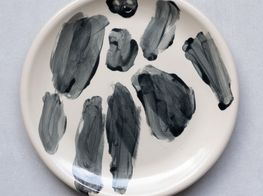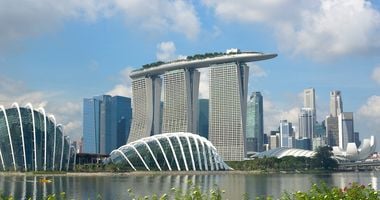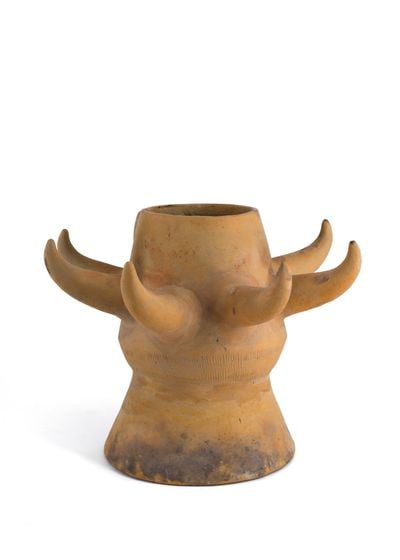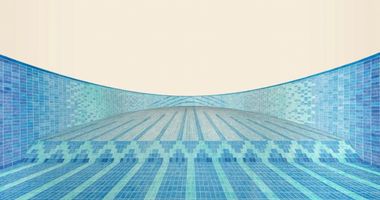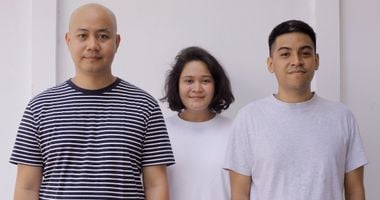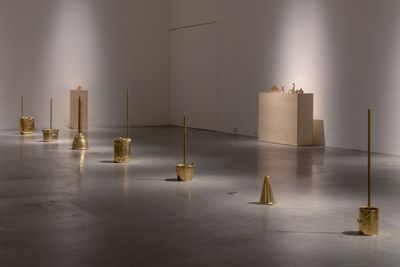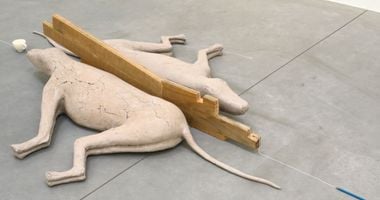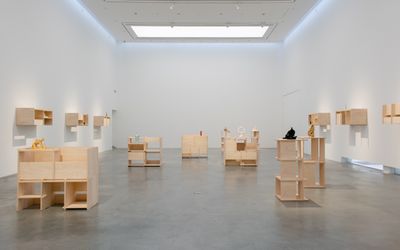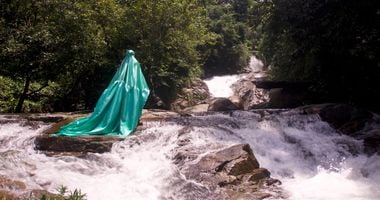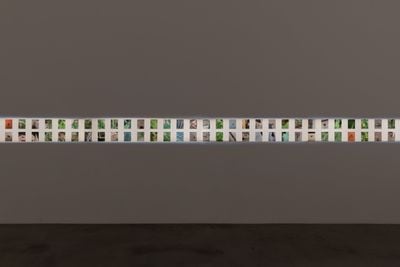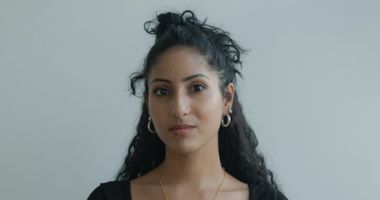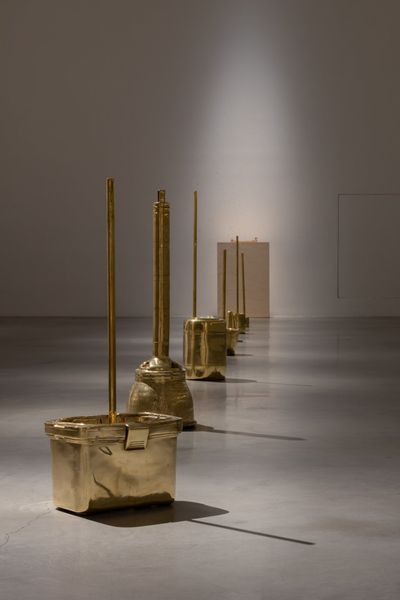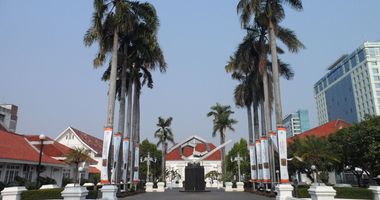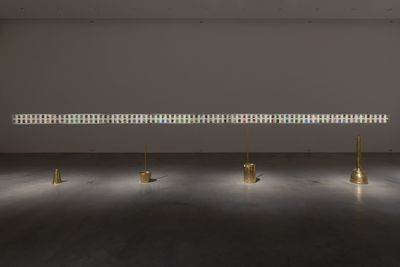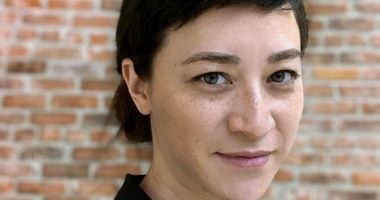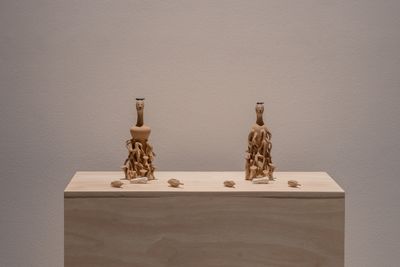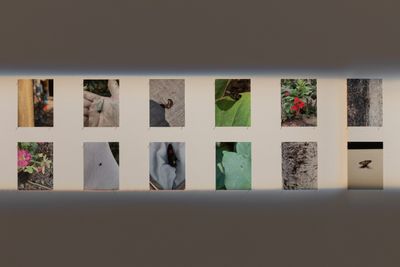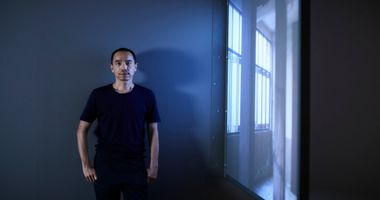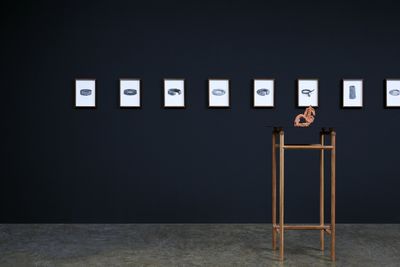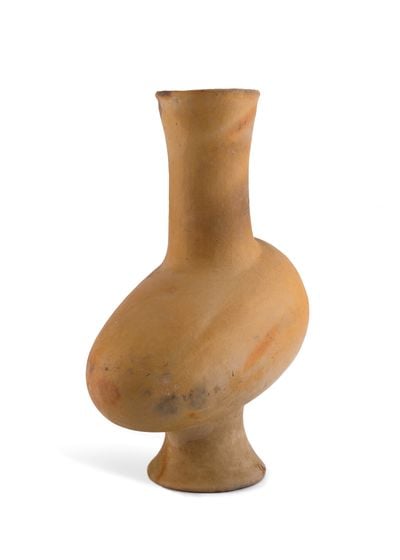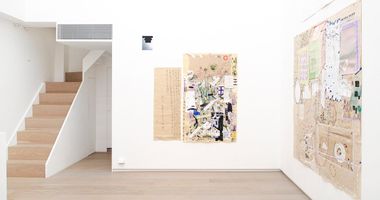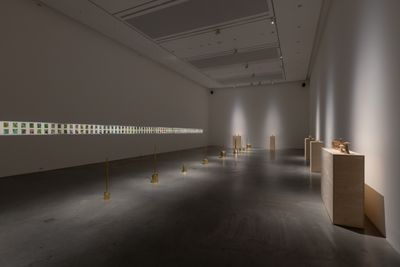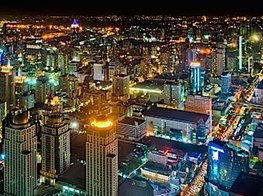Dusadee Huntrakul Doubles Down on Looking
In Partnership With BANGKOK CITYCITY GALLERY
Dusadee Huntrakul (2022). Courtesy the artist and BANGKOK CITYCITY GALLERY. Photo: Kanrapee Chokpaiboon.

Dusadee Huntrakul (2022). Courtesy the artist and BANGKOK CITYCITY GALLERY. Photo: Kanrapee Chokpaiboon.
For the past two decades, Bangkok-based artist Dusadee Huntrakul has worked with ceramics, drawing, painting, and text to contextualise and give value to everyday encounters within the living world.
Leading with insights from archaeology, anthropology, history, and related humanities disciplines, Huntrakul's works often extend proposals to transcend an existence increasingly characterised by drudgery, ignorance, and apathy.
For instance, The Map for the Soul to Return to the Body (2019), shown at the 2019 Singapore Biennale, reframed Bronze Age artefacts with 16 earthenware vessels made from low-fired red clay extracted from the Ban Chiang Archaeological Site in Thailand, a former prehistoric settlement known for its red-painted pottery.
Resting atop functional wooden shelves, Huntrakul's ancient vessels addressed contemporary problems, with placards citing concerns such as right-wing nationalism, climate change, and universal basic income.
Rugged forms such as Citizen united, we are the majority (2019) alluded to the artist's dreams for the future and a democratic approach to art-making, which begins from human commonality to address the specific values we assign individual objects and beings.
Huntrakul's oeuvre is characterised by an austere charm and refined eloquence that continuously reaffirms his position as a human in the world in connection with others. Recently, the artist presented A Lens to See the World Through as part of the 'Discoveries' sector at Art Basel Hong Kong 2022, which explored the city as a site of coexistence.
Entanglements inherent to contemporary life found expression across bronze sculptures like Dreaming Together (2022), two tangled snake-like forms with human faces, visibly trapped yet reassured by the other's presence. Shown alongside ceramics, photographic prints, and hyperrealistic drawings, the body of work posited the world as an interconnected web.
Having graduated from the MFA programme at University of California, Berkeley in 2013, Huntrakul's education in the United States played a formative role in shaping his approaches to perceiving and unravelling the human condition.
Speaking to this belief in art's capacity to shift societal values toward the humanitarian is The Commoner's House, the artist's latest solo exhibition at BANGKOK CITYCITY GALLERY (6 August–25 September 2022).
Featuring photographs, brass sculptures, and ceramic works that revisit ideas of equality, being, and coexistence, The Commoner's House reiterates the artist's commitment to generating new ways of seeing, perceiving, and evaluating connections between living beings.
Focusing on the ubiquitous and the minutiae of city life, the exhibition networks connections between seemingly disparate objects and images—of the contemporary and the ancient, the anthropological and the entomological—to prompt a renewed awareness of the overlooked.
Eight brass sculptures modelled after traffic markers in Bangkok, titled after planets from the Milky Way, form a line crossing the gallery. Consisting the 'People's Sculpture' series (2022), they prompt a rethinking of what we deem 'common'.
The artist's personal experiences are expressed through new works on view, with emphasis on providing entry points into larger topics. Shot during the pandemic, Universe in the Garden (2022) comprises 158 small giclée prints depicting vivid close-ups of insects and vegetation, drawing attention to the artist's ethos of assigning equal value to all living things.
Altogether, The Commoner's House consolidates material and thematic developments in Huntrakul's practice since his last solo exhibition at the gallery in 2019. For They Talk, the artist explored the ways nature has communicated with humans throughout time, using ceramic figures to mediate connections with these voices we no longer hear.
Over the following conversation, Huntrakul and I speak about the inspirations behind The Commoner's House, his evolving practice, the dynamics of human-animal coexistence within a city, and the ubiquity of sculptural beauty on Bangkok's streets.
What is revealed is the primacy of ways of seeing to recognise and establish value judgements, and the need to raise visual literacy to dream up more sustainable and humane futures.
JTHow did the idea for The Commoner's House come about?
DHAt the beginning of the exhibition's making, we were under lockdown. Luckily, the place where we stayed had a tiny garden. As a visual artist, I have to look at things all the time to remain literate, so I started to look in the garden and saw insects. I took pictures, and then one became two, three, four, five, six.
These insects are complicated in terms of their patterns and how they're put together. The exhibition came from this need to see something and keep sharpening my visual literacy. We were living in Bangkok at the time, and I believe I discovered only a fraction of the insects living in our garden in the middle of the megacity.
JTAmong your works in The Commoner's House is a suite of 158 photographs taken on an almost ritualistic daily basis. These insects are very small and their details can easily go unnoticed.
But there are large things we omit to notice in the city, as well. For instance, within this exhibition, you have essentially alchemically transformed traffic markers, which are ubiquitous across Bangkok, and reappraised them into objects of value for the 'People's Sculpture' series. They are exciting sculptural forms.
What drew you to these objects? Could you share your process in making these brass works?
DHI've always been fascinated by objects that regular people have made and to use of them in a way that is particular to our time. And of course, they use common things lying around the house.
'Commoner' means 99 percent of people. It's our house and a house for everybody.
The function of these objects is to claim space—usually, a public space that is tied to a relationship of who owns what, who gets to use what when, and how a person can claim something that perhaps doesn't belong to them.
With all the possible object combinations that you can make into these no-parking traffic cones, the possibilities are quite huge. But there are only two essential components to them: the pole and the body to give it weight to stand on its own.
Within that, they hold sculptural value and a readymade sensibility. They speak to technology and current visions in Thailand, as the origins of the objects are international, but the visions are very local. They are present in Singapore and Jakarta, as well. But they're not quite the same.
JTIn all major cities, perhaps.
DHYeah. I would like to see if other places in the world could make no-parking cones with the same sensibility as Thailand.
JTThis new suite of brass works extends this idea of attributing value to things. You've touched upon this in previous exhibitions, in encountering parking cones on the streets, which are often made with discarded materials.
By re-casting them in brass and placing them within the gallery context, their value changes, and we become aware of their sculptural forms. You had made a work some years ago about the future of things, where everything was shit and shit itself was valuable. What is your position on the value appraisal of various things in society?
DHI think value is important. Structurally, it ties to the economic system to which we are subscribed. As an artist, if I can pull anything out of this, it's that I can expand or insert something that has to do with shifting symbolic values that I think are quite as true as well.
I would like to dream about places that we, as commoners, have fair access to.
For example, the faeces and similar works were about consumption, and consumption in itself is about production. Of course, faeces are also about recycling, energy, rejuvenation, and rebirth for other living things: microbes, bacteria, fungi, and so forth. So, I place these works in a position where I can see the truth of the value I want to propose.
JTIn the ceramics presented in this show, the faeces serve as an additional metaphor. Your work is very recognisable for its incorporation of these very tiny, delicate, handmade ceramic gecko poops within the sculptures. They serve as markers of non-human presences we coexist with.
How did the gecko poops come about? Could share the story of your prior studio and your experience with them?
DHMy experience with geckos started a long time ago. It's kind of a sad story from the very first encounter.
I was in first grade at the time and in boarding school. One day, I went into the study to finish my homework, I opened my pencil case and found a dead gecko inside. What stuck with me was the smell of death.
Within a night or two, the smell of the rotten body somehow stuck to the pencil case and I didn't know what to do with it. I got rid of the body, but the smell lingered for months. That was my first encounter with geckos.
Of course, we have common house geckos everywhere in Thailand; they would come into the house and live with us. They do represent this kind of wilderness that is beyond us.
JTIn your old studio on the outskirts of Bangkok, you had this rack of ceramic works that geckos would indiscriminately poo on. When you shared that story with me, it was almost a paradigm shift in my thinking. What kind of value are we creating, and for whom?
This interconnectedness is very much present in your practice. The ceramic works, brass pieces, and photographs in your current exhibition seem to be disparate objects, but I can see how the insects feature within the food web, and how the geckos feed off them.
And of course, this food chain is set right within the city and the brass poles are also markers of other human beings that cohabit these spaces with us. Could you speak of these dynamics between different lifeforms?
DHIt dawned on me more and more during the Covid-19 lockdown, when I started taking pictures of insects, and while making the gecko poops. I was seeing this cycle of life around me in a more intelligent, divine, and magical way.
Now you're seeing the webs beyond the geckos: one type of insect, different types of trees, and then you can start thinking about the soil, and all these things living in the soil within the city.
I have a four-year-old child, and there's this saying I really like: 'To make the children of this generation care about our environment, one way is to make them realise the magic of nature.' Under lockdown, one of the activities I did with my boy was going around this tiny garden to search for living things.
JTSurprisingly, the 158 pictures of insects captured in your garden do not come across as entomological, but rather anthropological—almost a reflection of human activities and how we interact with insects that co-inhabit our cityscapes.
You have been exceedingly interested in the field of anthropology. For instance, in your work at the 2019 Singapore Biennale, The Map for the Soul to Return to the Body, you focused on how Ban Chiang ceramics could be recontextualised and remain meaningful to us.
Prior to that, in your 2018 show at 100 Tonson Gallery in Bangkok, There are More Monsoon Songs Elsewhere, you focused on the Ban Chiang bracelets. This idea of anthropology and archaeology has pervaded your practice. Where does that interest stem from?
DHI got really lucky and got to study with amazing anthropologists like Anthony Seeger—the nephew of Pete Seeger, the legendary American folk singer—and Aihwa Ong.
I went to school in the United States, where I felt powerless in terms of assimilation, language, and the lack of it, but when I took these anthropology courses, they gave me the power to realise that I am not just an immigrant or a foreign student, but a student of culture.
The first class was with Anthony Seeger; the course was about ethnomusicology, but it was also about me being in the States learning why people do what they do. I also realised how Thai I was because of what I believed, did, or would do.
But it started before that, I took a few anthropology courses in junior college, where we studied the lineage of Homo sapiens, which blew my mind. It brought me back to a reality that I was happy to be a part of—something as old as the universe.
JTOf course, Aihwa Ong wrote Buddha Is Hiding (2013), which became the subject matter of your work at the 2013 Singapore Biennale. Why did you select that particular text, stemming from this experience of being an immigrant in America?
DHI was studying with Aihwa Ong at the time, who was writing a story about Cambodians moving through the atrocity of Pol Pot's regime, which catapulted from the Vietnam War to refugee camps in Thailand, and then their resettlement in modern states in the U.S. around the Bay Area in San Francisco.
At the time, Singapore was hosting the first biennial about Southeast Asia. Me being Thai, and Aihwa Malaysian Chinese, I thought the text could be an anchor as to how we perceived history as Southeast Asians, as well as world citizens.
JTThere's this timeless quality to your work. While it contains historical or perhaps archaeological references, it's also very future-thinking. You are offering proposals for ways in which we can live with one another, not only as human beings but with other organisms. Is that something that you hope audiences take away after experiencing your works?
DHDefinitely. I mentioned that I have a child who is four years old. And I think once you have a child, you're somewhat forced to think ahead, at least for a year or two.
But of course, you can dream of thousands and thousands of years. In this exhibition, a lot of the pieces are about dreaming. Dreaming is about your experience, but it also connotes the desire to get somewhere. I would like to dream about places that we, as commoners, have fair access to, such as universal healthcare, universal labour rights, and universal wages.
And it's not just for us, of course. We're at this point in time where we know that as humans, we have been impacting the world the most. We hold the key to perhaps do something, so I do dream of places that are cared for in a way that is beyond sustainable. I don't even know what that means, because it's tough to dream about it.
JTIt's great that you said, 'I don't even know what that means', because sustainability comes in such a myriad of forms. In The Map for the Soul to Return to the Body, for instance, you gave each vessel a title pertaining to issues of the environment, agriculture, the education of young people, and more.
To elaborate on this idea of dreaming, several works in The Commoner's House are titled Dreaming of something or by something, like Dreaming by Foothills of Mountains (2022). Where did their titles emanate from?
DHFrom my personal longing, I guess. I do want to live in a place that is greener than Bangkok, or a mountain here. Our current laws state that we cannot own the land around a mountain, if I remember correctly, so I assume it is left wild. I want to live closer to that wilderness, but by being closer, I might destroy it again.
Dreaming is about your experience, but it also connotes the desire to get somewhere.
But it's that dream. And thinking about 'I'm dreaming', there was this piece from The Map for the Soul to Return to the Body titled Divert All Labor Force to Produce Healthy Ecology (2019). It seems possible that each of us could be considered as another source of clean energy and not just wage labourers to produce that dream.
JTWe had discussed a few potential titles when we were conceptualising and trying to frame the exhibition, and settled on The Commoner's House. What does the title mean to you?
DHThe Commoner's House is very direct for me. 'Commoner' means 99 percent of people. It's our house and a house for everybody. I'm with all these insects that don't look fancy from afar, but each one is fascinating. An earthworm does better things for our environment than I ever did. And so, it's about something that belongs to everybody.
JTThe magic of the everyday and the ordinary.
DHYeah. What about you?
JTThese are things we encounter every day. Often, we need an artist such as yourself to highlight what's so special and magical about them. At the same time, I felt the political dimension. The title recalled the House of Commons, its systems of value, the empowerment of select individuals, and power disparities in the world.
With this exhibition, you offer people a very important opportunity to rethink the systems of appraisal we have. How do we ascribe value to things? How do we assign importance? These are things we should be thinking long and hard about.
DHThat's true, and I think that's the magic of art. If anything, it can perhaps shift values and symbolic values a little bit—like an inception of sorts, you go in there, plant a seed, and hope it will grow into something else.

